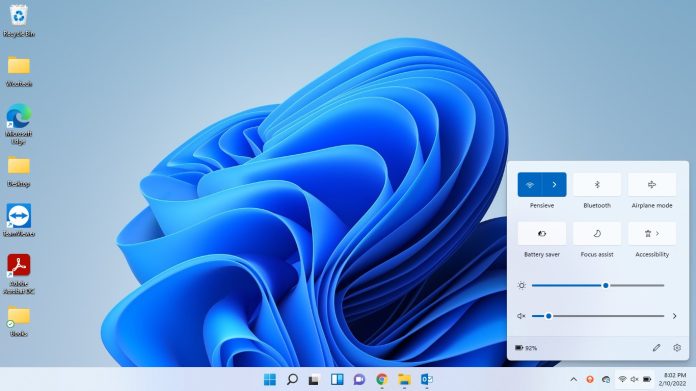In this digitized world, almost every one of us has a computer, and while using it, we may encounter a BSOD (Blue Screen of Death) error named “Driver Overran Stack Buffer”. We all are aware that drivers act as a bridge between the OS and it’s hardware. Windows require drivers for performing with hardware. The error occurs while the driver writes data beyond it’s defined memory address. Nevertheless, multiple other reasons like file corruption, malware, and disk errors may cause the same BSOD issue. After extensive study, we have come up with the best thinkable ways to fix the BSOD error “Driver Overran Stack Buffer”.
Steps to fix the BSOD error “Driver Overran Stack Buffer”
While you are encountering any BSOD error, you tend to get stuck with a blue screen. Then, you cannot perform any troubleshooting steps also. Now, in this situation, Windows consists of a safe mode feature that is meant for troubleshooting. To perform the suggested fixes, you need to enter into the Safe Mode. Below mentioned are the fixes:
Update the problematic driver
One of the quickest ways of fixing the BSOD “Driver Overran Stack buffer” is updating the device driver, which is problem-inducing. Since Windows uses multiple drivers, your best bet is to analyze the memory dump files using NirSoft BlueScreen View or WinDbg. This helps in identifying the exact driver file that is causing the BSOD. You may then try running a cursory check online to determine the device that is related to the file. When you are done with that, you need to download the latest version of the device driver from the hardware manufacturer website. Users can run the executable file that is downloaded for immediately updating the drivers after that. If it fails, you may use the Device Manager to apply the update.
At first, press Windows + X and then choose Device Manager
Next, expand the device category like Display Adapters
Now, you have to right-click on the driver that you wish to update and then choose Update Driver so that the Update Drivers wizard comes up
Then select the option Browse my computer for drivers
You need to specify the path to your driver that you have just downloaded; use the Browser button
Then select Next and keep on following the remaining instructions for updating the device driver
Finally, leave the update drivers wizard
Via windows update, update the driver
The hardware manufacturers often release driver updates via Microsoft. Using Windows update, you can even check if the driver’s latest version is available. For this, you need to:-
Select Settings after you have opened the Start menu
Then select Windows Update
After that, select View Optional Updates
Then, Expand Driver updates
After that, your need to select any pending updates for your device and then select the option Download and Install
Now, when you are at it, you must also try to update Windows itself. Usually, that helps resolve glitches and bugs related to the operating system that prevent drivers from functioning appropriately.
Roll back device driver
Conversely, the BSOD “Driver Overran Stack Buffer” might show up after you have updated the device driver. The Device Manager gives the option of rolling it back in that case.
First press Windows + X and then select Device Manager
Next, expand the device category
After that, select Properties after by right-clicking the driver
Switch to the Driver tab
Now select Roll Back Driver
If you see that the Roll back Driver button is grayed out, then it would not be possible for you to revert the driver back to it’s older version.
Reinstall device driver
If rolling back or updating the problematic device driver is not working, try reinstalling it. This will help you to rule out the issue associated with driver corruption.
First, press Windows + X and then select Device Manager
Expand the device category
Now right-click on the driver and then select Uninstall device
Now check the checkbox showing Delete the driver software for this device. Then select Uninstall
Your next job is to reboot the computer. The operating system must apply basic drivers automatically for the device. If necessary, you can always install any support software and dedicated drivers after downloading them from the device manufacturer’s website.
Update all device drivers
When you see that the problem is still continuing or you cannot identify the exact driver causing the BSOD Driver Overran Stack Buffer error, we recommend you update every device driver on your computer. If you wish, you may use a driver updater tool available for free to do so. A good choice is Driver Booster.
First, download Driver Booster and then install it
Then open the Driver booster, and after that, choose Scan to check the latest driver updates
To apply the updates, select Update Now
Also, remember to apply any driver updates that are pending for additional hardware devices with the use of Windows updates.
Disable the fast startup
The Fast Startup is a feature of Windows that helps in speeding up the boot times of the operating system. But, this feature is also a cause known behind numerous BSOD errors. Try to disable it and then check if it is making any difference.
First press Windows + X and then select Power Options
Next, scroll down to select Additional power settings
Then on the top left corner of your screen, you can see Choose what the power buttons do; select that
Then uncheck the checkbox that is available next to the option Turn on fast startup
Then Save Changes have to be selected
Run a Security Scan
Sometimes Malicious software can pretend as a driver or even hijack the legitimate driver and thus end up triggering the stop error “Driver Overran Stack Buffer”. We recommend you to perform an overall thorough scan of the total system for any malware. Windows Security against computer viruses offers decent protection, but a dedicated malware remover is much better to flush out the dangerous malware forms. We would recommend you to use the free version of Malwarebytes.
First, download the Malwarebytes and then install it
Then open the Malwarebytes and then select Scanner. After that select Advanced scanners and Configure Scan.
To scan the startup items, scan registry, scan memory objects check the boxes, and scan with archives. You can even select Scan for rootkits, but this may significantly extend the scan.
Next select the driver partition that houses the operating system
Finally, select Scan
Fix the errors of the operating systems
The SFC (System File Checker) is a tool of command which fixes corruption in system files in Windows. Even if the BSOD “Driver Overran Stack Buffer” continues to be a problem, you can try to run it.
After you have pressed Windows + X, select Windows PowerShell (Admin)
Then type the command sfc/scannow into the console of elevated Windows PowerShell
Hit Enter
Fix disk-related errors
After running the System File Checker, you can go ahead and run the CHKDSK Utility at a computer startup. This can fix any errors related to the disk.
After you have pressed Windows + X, select Windows PowerShell (Admin)
Then type the command chkdsk C:/R into the console of elevated Windows PowerShell
First press Y, and then to confirm that you wish to run the CHKDSK unity the upcoming time you are rebooting Windows press Enter
Check for errors in the WinRE
If you cannot boot in Safe Mode and normally into Windows, you may try to run the CHKDSK Utility and System File Checker through the WinRE (Windows Recovery Environment).
First restart your computer and then enter Windows Recovery Environment
After that, select troubleshoot and then Command Prompt
Now run the System File Checker: Sfc/scannow/offbootdir=C\/offwinder=D:\Windows
On the boot volume run the CHKDSK Utility Chkdsk D:/R
Run the windows memory diagnostic tool
Another possible cause why your Windows keep crashing into the BSOD issue is faulty memory. Faulty memory might result in corruptions in random memory to occur. This leads to crashes and system instability. In this case, you need to replace your faulty memory module with an innovative one. To check whether the faulty memory causes the BSOD issue, you may run the Windows memory diagnostic tool.
First press Win + R and then for launching Windows memory diagnostic tool type mdsched
Don’t forget to save your work and then move on to select Restart now and check problems.
Patiently wait for the process to end when the Windows are running into two test passes
If you see that the diagnostic tool is showing a bad memory result, you need a replacement of the memory module.
Run the Driver Verifier
The driver verifier is referred to as a Windows utility that might be used for finding the driver/s, which is/are the underlying reasons for the BSOD. It can stress any faulty driver so that the driver results in a BSOD. Then, a report is generated with the driver that might have caused the cash. You must always remember that it will always not find the faulty driver. In most scenarios, it is quite a good way to narrow down the issue. You must never forget to back up the data and make a restore point before you attempt to run the Driver verifier.
First press Win + R and then type verifier for launching the Driver verifier manager
Then you need to click on the radio button that is available next to the Create custom settings and click Next
You have to select every listed option except the DDI compliance checking. After that, click Next
Then click on the radio button that is situated next to the Select driver name from a list.
Next select all third-party drivers and then click Finish
Before going forward, you need to ensure that the verifier is running. To perform so, you need to
- First press Win + R and then type After that, for launching elevated command prompt, press Ctrl+ Shift+ Enter
- Type verifier/querysettings at the prompt
If this returns the list of drivers, you will understand that the verifier is successfully running. If due to some reason, the verifier is seen not to return the list of drivers, then you must try to launch the Driver Verifier Manager again.
Now you are sure that the verifier is running, reboot the system and then continue to use it normally until and unless you see that it is crashing into BSOD. You must note that viewing another BSOD can take days, but you need not worry. Just continue with the normal operation of your device. If you see that the Driver Verifier manager identifies the problematic driver successfully, you uninstall or update it.
Wrapping up
Hope this article helped you resolve the BSOD Driver Overran Stack Buffer error. But still, if none of the fixes mentioned above work, then some advanced fixes are available that you may work on next. Despite some advantages, there is a possibility that the Windows update us introducing stability issues. Then you need to uninstall the latest feature or quality update and then check if it is helping. Have you tried overclocking your PC? Try to revert the changes to the RAM, GPU, and CPU. You can try updating your motherboard’s firmware to resolve the incompatibilities between the drivers and hardware devices. Next, we would suggest you to try factory resetting your Windows installation. There is an option to keep your personal data intact or you can perform a manual backup before doing such. Finally, we would recommend you to completely wipe the system partition and then reinstall Windows.
Experiencing difficulties with your Device, check out our “How To” page on how to resolve some of these issues.














